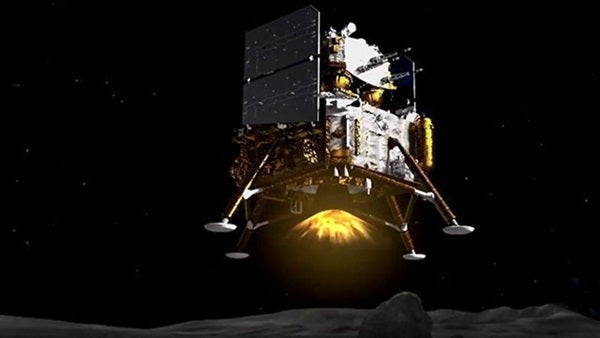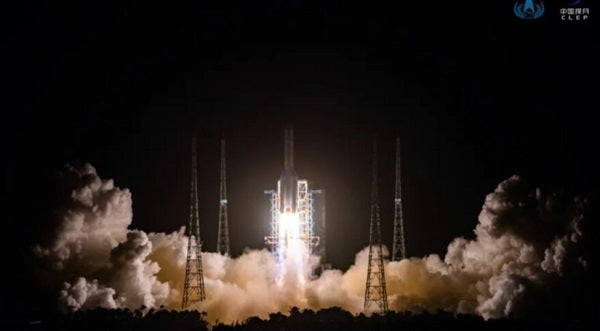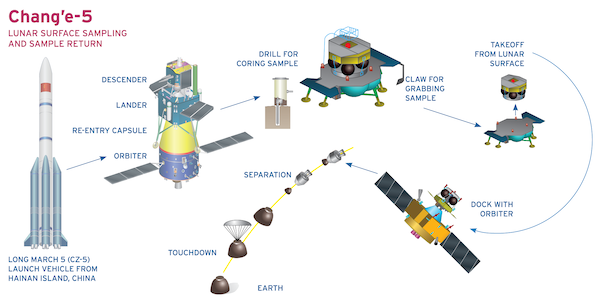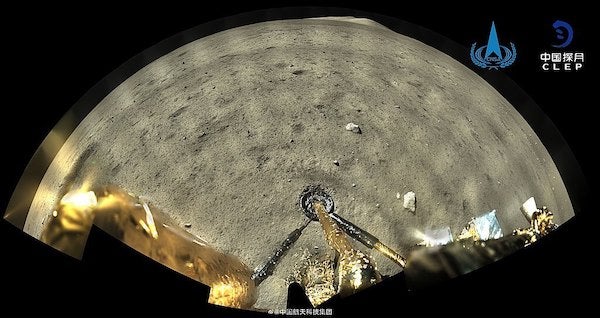December 1 was a momentous day for the China National Space Administration (CNSA). On this day, the long-awaited Chang’e 5 mission, which launched from the Wenchang Satellite Launch Center little more than week ago, touched down on the Moon.
The goal of the Chang’e 5 mission is to return at least 4.4 pounds (2 kilograms) of lunar samples to the Earth via a fully robotic spacecraft. The last time Moon rocks were brought back to Earth was 44 years ago, when the Soviet Luna 24 probe returned six ounces of material for detailed analysis.
Chang’e 5 is the latest step in China’s so called “Lunar Exploration Program.” And while most Chinese missions don’t get much attention from Western media outlets, Chang’e 5 marks a major step forward for CNSA. And now, the world is finally taking notice.
What will Chang’e 5 do?
The entire craft was carried to space aboard China’s heavy-lifting Long March 5 rocket on November 23. To get to the Moon, it then performed several burn maneuvers, followed by braking burns that allowed it to enter orbit some 125 miles (200 kilometers) above the lunar surface. After dropping to an altitude of some 9.5 miles (15 km), the lander and ascent module detached from the rest of the craft to make a self-guided, safe lunar landing. According to CNSA officials, the craft touched down at 10:11 a.m. EST near Mons Rümker, a mountain in the Ocean of Storms.
The lander, which in some ways resembles an Apollo lunar module, quickly deployed its solar panels to begin generating electricity. This will power the lander’s array of instruments, which include ground-penetrating radar, spectrometers, and a drill capable of collecting samples as far as 6.5 feet (2 m) below the lunar surface.
Once in orbit, the ascent module will unfold and deploy its own solar panels before rendezvousing with the orbiting service module, which holds the Earth return module. The ascent module will then dock with the service module, where the lunar samples will be transferred to the return module.
With the samples set for their return trip, the ascent module will then be jettisoned from the area. After several more lunar orbits, the service module (still paired to the Earth return module) will fire its rocket engine, beginning its journey back to Earth.
Upon entering Earth orbit, the return module will separate from the service module and begin its descent to the surface. The Earth return module will follow a curved trajectory that skips it through the atmosphere to slow down before deploying a parachute system. Finally, it plans to float down and “softly” land in Mongolia.
Can Chang’e 5 pull it off?
If all goes well — and that’s a tall order — CNSA will accomplish an impressive technological feat that hasn’t been pulled off by any nation for more than four decades. And Chang’e 5 is just the latest in a series of ambitious lunar missions by CNSA, each of which has incrementally built on the lessons learned from its predecessors.
Assuming Chang’e 5 succeeds, the next planned CNSA mission to the Moon (Chang’e 6) would shift focus to the lunar South Pole.
Chang’e 6 is nearly identical in design to Chang’e 5, although it will carry some different so-called “secondary” instruments. For instance, Chang’e 5 carries the privately funded Manfred Memorial Moon Mission package, including a radiation dosimeter and a radio transmitter intended to be picked up by amateur operators on Earth. Meanwhile, the secondary payload for Chang’e 6 includes the French Detection of Outgassing Radon (DORN) instrument. And the Chang’e 7 and 8 missions might even include a lunar rover, as well as miniature flying drones.
The first taikonauts on the Moon?
CNSA is still quite far from this goal, however, and the space agency only has limited experience with crewed spaceflight. China has launched only six crewed missions to date. Still, these missions have included multiple crewmembers, numerous spacewalks, and even dockings to the first Chinese space station, known as Taingong-1.
The Chang’e 5 mission represents a significant undertaking by China, as a successful return of lunar samples would not only boost the nation’s prestige and spirits, but also further establish the country as one of the most important players in space.
And even if Chang’e 5 fails — which is possible given all the precise steps that need to flawlessly take place — it seems that Chang’e 6 is potentially ready to step in without missing a beat.
Doug Adler is the co-author of From The Earth to the Moon: The Miniseries Companion













